Are you looking for the top 10 types of fatigue testing machines? You’re on the right platform. This guide will uncover the different types of machines and their specifications. As you know, fatigue testing is critical for many industries. The aerospace and automobile industries are at the top of the list.
Each component used in automobiles or aircraft goes through testing. Manufacturers don’t use any part that is not passed from fatigue testing. In these tests, the component faces a load in the testing machines. The load is repeated at different power and angle levels. It compresses the component and checks its durability.
A component that fails in fatigue testing machines is discarded, and vice versa. There are different types of machines available in the market. Each of those has its own purpose and properties. This guide will discuss different types of machines and their specifications. So, let’s begin!
Overview of Fatigue Testing Machines
The fatigue testing machine checks the material’s durability and strength. It is a device that puts a load on it and simulates real-world conditions. If the component does not break, it means it is durable.
A product that goes out faces different environmental stresses. These stresses include vibration, friction, temperature, and shock. Fatigue testing machines apply these stresses to the material. The machine also stresses repeated manners.
In simple words, the machine tries to mimic the real-world conditions. If the component sustains under load, it indicates its durability. On the flip side, it breaks and is not approved to go out. These machines tell us about the behavior of the material under different stresses.
Imagine a part of an airplane that is used without fatigue testing. So, the engineers won’t be able to know how long that particular part will last. So, there will be a risk of failure during operation. Moreover, these machines also tell engineers about how much load a part can bear. So they don’t overload that part.
Top 10 Types of Fatigue Testing Machine
So, you now understand the purpose of the fatigue testing machine. But do you know that there are multiple different types of these machines? Each of them is specialized for specific functionality in terms of testing. Some of them have more advanced features like digital controls.
However, such machines are costly. Conversely, machines with manual control and a simple interface are less costly. Machines also vary in terms of performance. Some machines apply sheer force on components. On the contrary, other machines rotate the component and put a mechanical lead on it. Let’s discuss different types of fatigue testing machines.
1- Axial Fatigue Testing Machines
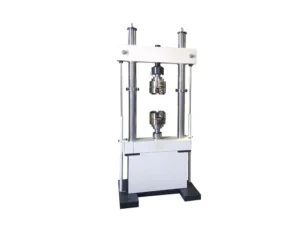
This machine tests the component by stretching and compressing it. It applies the load in the axial direction, and the constant load is applied repeatedly. So, the material faces consistent stretching and compression. Engineers fit the part that is under testing on the frame of these machines.
The actuator, which is the main component, stretches and compresses the part. This stretching is not sudden. It is gradual over time. This way, the machine tests how many cycles a material can handle before it fails. If the product does not break in the first cycle, it undergoes many repeated cycles.
2- Rotating Beam Fatigue Testing Machine
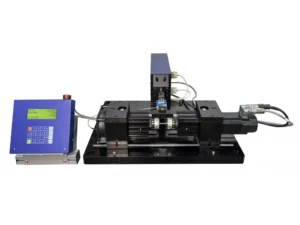
Some parts are easy to test. Machines simply apply force to them. If they are sustained, they are considered reliable, and vice versa. However, some components, such as engines and turbines, rotate during their function. So, the typical method of applying sheer force at one angle does not work in such cases.
Therefore, these rotating beam machines are used to test such parts. They apply load by rotating and bending the material. This machine checks the rotating parts’ capacity to bear the load. The load depends on the size of the material and its weight. Heavy engines or turbines handle heavy loads and vice versa.
3- Thermal Fatigue Testing Machines
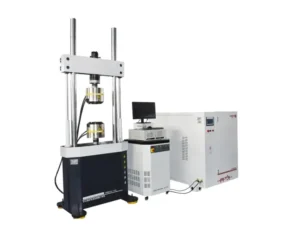
In the real world, a component can face different loads and stresses. The stress can be simple load, pressure, or high temperature. This machine checks the material by exposing it to high and low temperatures. The product behaves differently when undergoing such temperature changes.
Keep in mind that this temperature change simulates real-world conditions. Under such extreme temperatures, components can either crack or deform. Sensors in these high-quality fatigue testing machines detect the component’s behavior. If it cracks, it indicates it is unsuitable for use, and vice versa.
Quick Info: Many airplane components undergo this type of testing. During flights, the components can experience very low temperatures with negative figures. So, this testing tells whether the components are suitable for use.
4- Electromechanical Fatigue Testing Machines
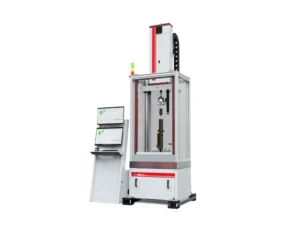
This type of fatigue testing machine is different from other types. An electric motor applies the load to the component. What makes this machine stand out is its control. The operator can apply the load with precise control. This machine is typically used in metal and composite components.
The servo-hydraulic system made the testing easy and precise. The load checks the durability of the metal. You might wonder if this load breaks the component or not. The machine contains a sensor. This sensor detects the conditions of the component when it passes the load. These sensors detect if the component is deformed or not.
5- Biaxial Fatigue Testing Machines
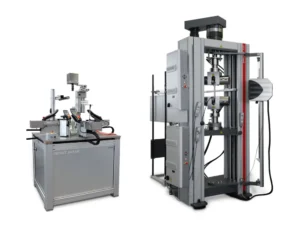
In the above section, we discussed axial fatigue testing machines. However, this biaxial machine is different as it applies force in two directions. This machine is suitable for parts and components that undergo high pressure in the real world. So, they are tested in these machines at very high pressure.
So, the engineers know how a component will behave under high pressure. This machine lets the material undergo different levels of stress. Those include axial, torsional (twisting), and bending loads. The operator of the machine applies the stress in periodic cycles. If a product passes one cycle, it undergoes a second and the process goes on.
Many believe a biaxial fatigue testing machine is better than a uniaxial one. The reason is that it puts stress on every side of the component. Remember that a component faces loads and pressure from each side when used in the real world. Furthermore, the machine can test multiple materials at once.
6- High-Frequency Fatigue Testing Machines
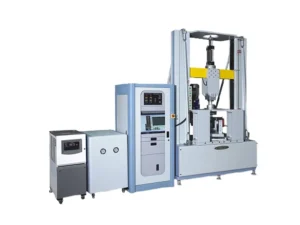
These fatigue-testing machines are very efficient. The reason is that they apply loads at high frequency. Usually, the material faces hundreds to thousands of cycles of loads per minute. Such high frequencies make the test reliable. It checks how a component will behave when it faces high-frequency stress.
These machines are expensive as opposed to simple fatigue testing machines. The reason is that they require more complex and precise sensors. Small lags of error can affect the reliability of these testing machines. More sophisticated and high-quality sensors are used in these machines.
These sensors track the behavior of the material and check for fatigue. The aerospace industry uses this type of machine, and its primary reason for its usage is its quick speed. Reliability and quick speed are the significant features of this fatigue testing machine.
7- Corrosion Fatigue Testing Machines
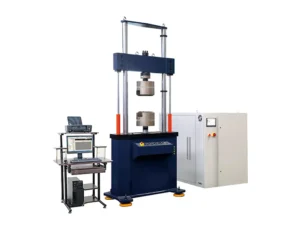
These machines are very costly as well. The reason is that they have dedicated corrosion chambers. The component under test goes in these chambers. The operator analyzes how a product will behave when it goes to a rusty environment.
It is not just about corrosion testing. Instead, the component also faces high mechanical stress. The sensor detects how the product behaves when it faces a load with a rusty environment. Usually, marine products or components undergo this type of testing.
The reason is that those parts remain in such conditions in real life. For example, some components of vessels and boats. They remain in salty water. The chances of rust are high. So, such testing tells how long a component will last without getting rusty.
8- Wheel Disk-Hub Fatigue Test Machine
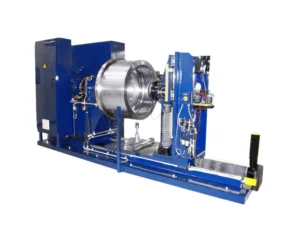
This fatigue testing machine is standard in the automobile industry. It checks automotive parts, such as wheel disks and hub assemblies, used in vehicles. These two components are critical to the vehicles’ functionality. They undergo different loads during use.
The hub remains attached to the vehicle’s axle, and the wheel disc joins the wheel with the hub. This machine puts cyclic loads on the hub assembly. This load is similar to the force this assembly faces when used in the vehicle. The machines’ sensors keep track of potential failures.
9- Spring Fatigue Testing Machine
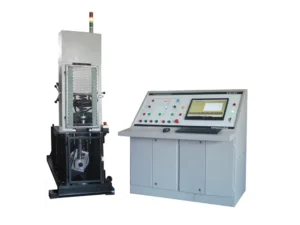
Many industries use springs to manufacture different products. The quality of those springs is crucial. If a spring malfunctions, it affects the performance of the whole product. For example, if springs in a car’s suspension system fail, it can lead to accidents.
The landing gear of the planes also uses spring mechanisms. That makes quality testing of springs inevitable. This machine compresses and stretches the spring by applying force. The sensor detects the performance of the spring under the force.
They check if the spring can withstand the load that it will undergo during use. If it fails the test, it is not good to use. This testing also tells how much force or load a specific spring can withstand. A spring that performs poorly in this testing is discarded and rejected.
10- Radial Fatigue Testing Machine
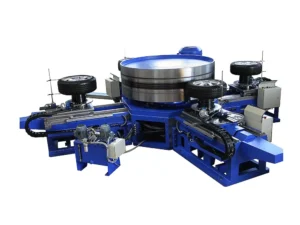
Radial fatigue testing is crucial because of its stress due to rotation motion. This testing is standard in the automotive and aerospace industries. The component is placed in these machines. It undergoes extremely high rotational motion. Due to this motion, the component faces stress.
The sensor detects the behavior of objects under high motion. Generally, the wheels of the aircraft go through this type of fatigue testing. This test determines the endurance of the wheels. Keep in mind that during landing, the tires of airplanes face high loads. With radial fatigue testing, the engineers come to know the capacity of tires.
Manufacturers & Suppliers of Fatigue Testing Machines
Choosing the proper fatigue machine manufacturer is critical. One wrong decision can put your budget at risk. There are many suppliers and manufacturers out there. Each of those claims to be the best. However, only some of them are truly capable of making reliable machines.
Fatigue testing machines are very costly. Imagine buying a machine from a new manufacturer that does not offer value. In that case, you’ll be left alone with no warranty and after-sales support. I want you to avoid such circumstances. Therefore, here is a list of some reliable manufacturers that you can trust.
| Manufacturers & Suppliers | Country |
| Instron | United States |
| ZwickRoell | Germany |
| Shimadzu | Japan |
| Tinius Olsen | United States |
| MTS Systems Corporation | United States |
| Ots-Test Equipment | China |
At the OTS Test Equipment platform, we supply different testing machines. We are also dedicated to delivering high-quality fatigue testing machines. Every industry has specific needs and requirements. So our trustworthy team will work with you to give you customized solutions.
What makes us unique is our compliance with international standards. Small mistakes and negligence can lead to big disasters. For that reason, we follow strict quality control measures during the manufacturing process.
The above-given manufacturers are reputable names. However, their machines are relatively expensive. OTS Test Equipment offers better pricing options without compromising quality. If you have any more questions regarding our service, don’t hesitate to get in touch.
Fatigue Testing Machine: Specifications to Look For
The specifications of the machines make them suitable for different purposes. No matter how reliable the manufacturer is, they can’t help you if you don’t understand your needs. You should know about the types of tests your industry requires.
Here is the list of some factors or specifications that you must keep in mind while choosing a machine:
- It should have a user-friendly interface for easy operations.
- The machine must offer the load that your component needs for testing
- It should be perfect for the size of the component that you want to test
- The machine should comply with international standards for accurate results
- Fatigue machines must have advanced software for data tracking and analysis
- The sensor system must be precise and reliable to avoid any unwanted situation
- Remember to get a warranty card for the machines. It will save you from the loss in case of any technical issues.
Frequently Asked Questions
Which machine is used for fatigue testing?
There are various kinds of fatigue testing machines, each with its own purpose. For example, a spring fatigue testing machine is used to test springs. On the flip side, the wheel disk-hub fatigue test machine checks automotive parts.
What industries use fatigue testing machines?
Fatigue testing machines are used in various industries. However, their usage is standard in the automobile and aerospace industries. These industries involve more critical components that require precise testing.
Are fatigue testing machines expensive?
Yes, fatigue testing machines are expensive due to the complexity of their components. However, you can consider a simple machine with fewer options if you have a low budget. It will be relatively cheaper.
What is the cost of a fatigue test machine?
You can get an excellent working machine for $300 to $600. Generally, their prices range from a few hundred dollars to thousands. I don’t recommend machines over 1000 dollars. It can be too expensive for new business.
Conclusion
It is not wrong to say that fatigue testing machines are inevitable for many industries. These tests are necessary for the component to be handled properly during use. The engineers will need to find out how much load they can bear. As a result, the loads on parts can go above their limits.
If that happens, components will fail and be disastrous. Imagine if such a part is used in an aircraft and fails in the high sky. That would be scary. Therefore, fatigue testing machines have become a must-have. This article provides different types of machines from their manufacturers.